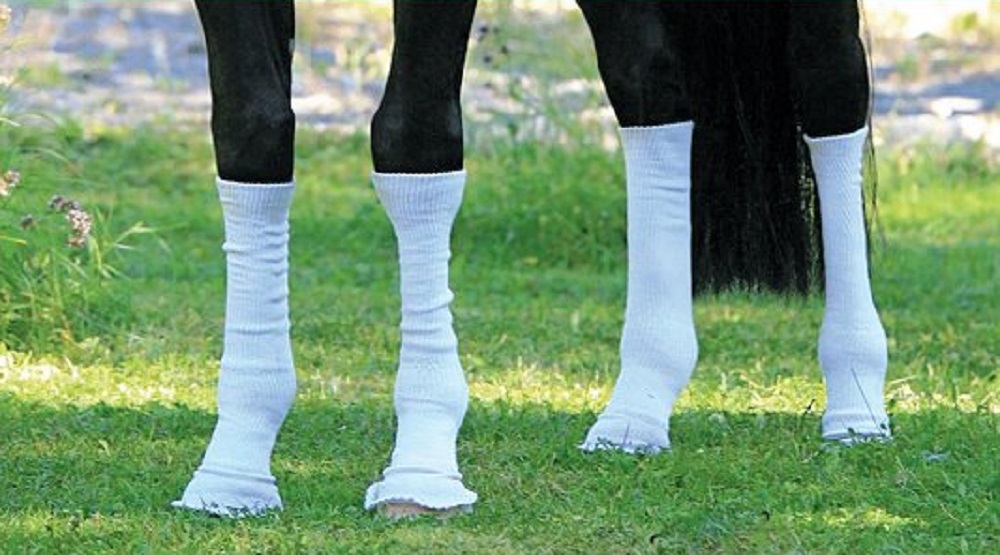Tuesdays with Tony
My Docs have a lot of ways they keep up with the latest and greatest things in medicine. One way is plain old talking. They talk with other veterinarians, they talk to horse people, heck, they’ll talk to anyone! Another way is on the internet. I’m convinced the internet was created by and for cats, so it must be a good thing. My Docs use it to talk with other docs about the crazy things horses do and how to care for them, and to attend formal continuing education (CE) on something called Zoom. (I thought this was what happens when I get excited and run for 4-5 steps, but it was explained to me that it’s sort of a meeting room for humans.)
Anyway, my Docs have been doing a bunch of CE on this Zoom thing for the past 18 months. They say it’s been a great way to learn about things, but it lacks the fun of real life CE. Recently that changed! First Dr. Abbott went to a really cool CE all about finding the hard-to-find causes of lameness. She came back with some great tips, tricks, and complaints about how Colorado does winter. Just this past week, Dr. Lacher came back from the national equine practitioners conference in Nashville. She also had complaints about how Nashville does winter, but more importantly, she sat down with me to talk about some cool wound care stuff!

Bacteria and Biofilm
Holy horses and their wounds! If there’s a way to injure themselves, horses are going to find it. For the most part, they are then going to try very hard to heal it. Healing is a horse superpower. If that superpower seems to be struggling, there’s a good chance biofilm, one of bacteria’s superpowers, is to blame. Biofilm is this gooey, nasty covering bacteria create to keep themselves safe from antibiotics and the immune system. If they can’t get to the bacteria, they can’t kill them! When wounds on horses aren’t healing, biofilm has to go on the list of suspects. What’s a Doc to do? Debride, debride, debride, and some other stuff. Never fear, I’m going to cover the debride part, but first, let’s talk about some other stuff.
The trick to getting rid of biofilm is to not also destroy the baby cells trying to heal the wound. There are some nifty things that help with this. Silver sulfadiazene has previously been thought of as the miracle cure for all as far as my Docs are concerned. Turns out, it also breaks down biofilm! That stuff really is amazing. There’s also a bandage with some stuff called, wait for it, it’s a mouthful, polyhexamethylene biguanide impregnated right in the bandage. This stuff does a great job keeping biofilm knocked back to manageable levels. Other things that worked well were topical antibiotics (after debriding, which, as stated, I promise I’ll talk about) and platelet rich plasma (PRP). But the most important thing to start with is……
Debriding
Docs need fancy words for things. Debriding just means taking away unnecessary tissue. For horse wounds in particular, this often means way, way too much granulation tissue. It’s part of their attempt at super healing which sometimes goes awry. Anyway. It can also mean removing dead tissue, dirt, and other debris. The most common way any of you humans debride a wound is with a water hose. You are always allowed to do this method unless there’s a whole lot of active bleeding. Tiny aside: if there’s lots of bleeding, wrap the wound with a whole lot of bandage material, call my Docs, have horse move as little as possible. Back to our story.
If a wound is really nasty, as horses are known to do, there are all kinds of cool bandage materials and techniques that can help remove the unwanted bits, and biofilm, and get your horse back on the healing track. Honey and wet gauze were a few of the things talked about. The trick to debriding is knowing when to stop the debriding. Too much debriding will keep a wound from healing. Basically, don’t decide you’ve read all my cat wisdom and now know all there is to know and can go it alone. Nope. You need a whole lot of learning to know when to stop and when to keep going, and how to pick the right product for each different type of wound.
On to bandaging!
There are some pretty cool products out there to help with the biofilm and debriding side of things, but what about bandaging? Bandaging helps keep swelling out of legs, provides coverage for wounds, can be part of the debriding process, and can contain things that reduce biofilm. Basically, bandaging is important.
Regular readers (you have subscribed to my blog, right?!?) have heard me talk about Sox for Horses. These things are pretty darn cool. The silver woven into the materials works on the biofilm, the material helps with debriding, and they help provide compression to the wound. And they’re washable/reusable!

However, sometimes you’ve got a leg or a spot that just doesn’t cooperate. May I (not-so-humbly) suggest you check out Equine Sleeves? These things are brand new to the horse world, and they’re pretty cool. They can be used on places as tricky as a hock. They can be stacked, or trimmed, used alone, or with things underneath them to help. Using Sox or Equine Sleeves with products that help debride and manage biofilm can help get those wounds back to healing quickly, and using fewer dollars. Sounds good to this cat! And these are also washable and reusable.
You know I talk about wounds on horses a lot. It’s because horses can’t resist an opportunity to hurt themselves. There’s really cool work out there to help my Docs do the best job they can to help your horse heal fast. I’m always amazed at the new, fun things my Docs learn about, whether it’s on the internet or in-person, and it gives me new, exciting information to share with you! So, make sure you scroll down and subscribe so you don’t miss out on any of my feline wisdoms.
Until next week,
~Tony
P.S. If you haven’t been over to my YouTube Channel recently, you’re missing out! The humans have been very busy making videos during the pandemic. If you like my blog, you’ll love their videos! Tell them I sent you.
Tuesdays with Tony is the official blog of Tony the Clinic Cat at Springhill Equine Veterinary Clinic in Newberry, Florida. If you liked this blog, please subscribe below, and share it with your friends on social media! For more information, please call us at (352) 472-1620, visit our website at SpringhillEquine.com, or follow us on Facebook!
[jetpack_subscription_form title="Subscribe to Whinny's Wisdoms"]

